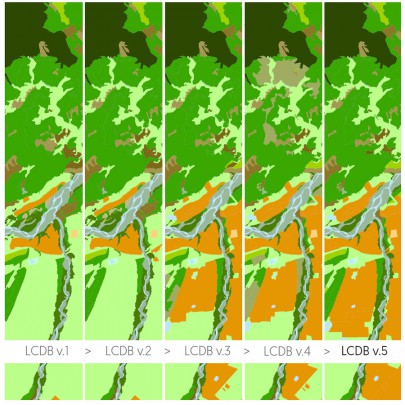Land Cover Database v5 launched in 2020

Progressive changes in land-cover mapping are shown with each new version of the LCDB
Land cover describes the extent of vegetation, built environments, water bodies, and bare natural surfaces across New Zealand. Measuring the composition of land cover and its changes is crucial to help decisionmakers understand the pressures that different land uses are placing on our land and waterways, along with the implications for biodiversity and the functioning of ecosystems.
Progressive improvements in landcover mapping have been made with each new version of the LCDB. One changing land-cover concern is the ongoing decline in wetlands. Preliminary results show that wetlands – New Zealand’s most depleted and threatened ecosystem – have continued to reduce over the past 6 years, with only 220,000 hectares remaining.
Other preliminary results show that growth in the country’s built-up area appears to be at a rate of one to three thousand hectares per year, of which 65–75% is on high-producing pastural land and 8–10% on cropland, orcharding, and other land covers.
The LCDB is used for a surprising number of applications, from international and national reporting of the state of the environment, through to the production of better maps, and management and monitoring of land cover and land use. For example, it has been used to monitor vegetation changes in catchments, and to decide the amount of bait needed in an area of land for predator control.
